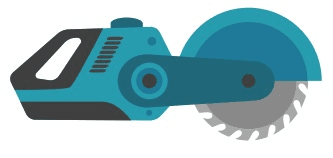Do Not Buy Into These "Trends" About Powertools

The Comprehensive Guide to Power Tools: Understanding Their Types, Uses, and Maintenance
Power tools are indispensable in the modern-day workshop, allowing jobs that would otherwise be tiresome and lengthy when carried out with hand tools. Varying from basic drills to complicated woodworking machines, power tools use efficiency and accuracy that can considerably change the method experts and hobbyists approach their tasks. This post checks out the different types of power tools, their applications, upkeep pointers, and often asked concerns.
Kinds Of Power Tools
Power tools are normally categorized into two main groups: cordless and corded. Each type has its advantages and ideal uses.
1. Cordless Power Tools
Cordless tools run on rechargeable batteries, supplying higher movement and ease of use. Some typical types consist of:
- Cordless Drill/Driver: Essential for drilling holes and driving screws, a cordless drill is a must-have in any toolbox.
- Cordless Circular Saw: Ideal for cutting lumber and other materials, especially when mobility is needed.
- Cordless Jigsaw: Useful for making elaborate cuts and curves in numerous products.
- Cordless Impact Driver: Perfect for driving long screws and fasteners into hard products quickly.
2. Corded Power Tools
While corded tools might be less portable, they usually supply more power and are typically used for heavier-duty jobs. Key examples include:
- Table Saw: A stationary tool that uses precision cutting for woodworking jobs.
- Miter Saw: Used for making precise crosscuts and miters in a workpiece.
- Angle Grinder: Useful for cutting or grinding metal and concrete.
- Drill Press: A fixed drill that permits achieving greater accuracy in drilling holes.
Comparison Table of Cordless and Corded Power Tools
| Function | Cordless Power Tools | Corded Power Tools |
|---|---|---|
| Movement | High | Limited by power cord |
| Power | Less effective | More effective |
| Weight | Lighter due to lack of cable | Heavier due to motor and cable |
| Battery Life | Limited by battery life | Constant power supply |
| Expense | Generally more pricey | Usually more economical |
Applications of Power Tools
Power tools are utilized across various industries and activities. Understanding the ideal tool for the job can boost efficiency and results. Some typical applications include:
- Construction Projects: Drills, saws, and nailers control job websites for framing and roof.
- Woodworking: Routers, sanders, and jointers assist in producing intricate and polished wood pieces.
- Automotive Repair: Impact wrenches and air compressors are important for dealing with automobiles.
- Home Improvement: DIY enthusiasts use various tools for remodellings, repair work, and landscaping tasks.
Popular Power Tools and Their Uses
Here are some regularly used power tools in addition to their main applications:
Power Drill:
- Used for drilling holes and securing screws.
- Comes in various sizes for different applications.
Reciprocating Saw:
- Ideal for demolition work and cutting through materials like wood, metal, and drywall.
Sander:
- Used for smoothing surface areas, offered in numerous types such as orbital and belt sanders.
Router:
- Employed in woodworking for burrowing a location in a piece of wood.
Nail Gun:
- A quick and effective tool for driving nails into wood and other products.
Upkeep Tips for Power Tools
Keeping power tools in optimal condition is necessary for safety and efficiency. Here are some upkeep pointers:
- Regular Cleaning: Dust and debris can collect in power tools. Routine cleaning helps preserve performance and extends tool life.
- Check Connections and Cords: Regularly look for fraying or damage to cords and connections. Change any damaged parts right away to avoid accidents.
- Hone Blades and Bits: Dull blades can decrease performance and precision. Power Tools Online ensures tidy cuts and faster operation.
- Lubrication: Certain tools need regular lubrication. Seek advice from the user manual for particular recommendations.
- Storage: Store tools in a dry environment and in their cases if offered. This protects them from wetness and accidental damage.
Often Asked Questions (FAQs)
1. What safety gear should be worn when using power tools?
- It is necessary to use appropriate security equipment such as shatterproof glass, hearing protection, gloves, and a dust mask depending upon the tool in usage.
2. How do I select the best power tool for a job?
- Consider the specific tasks you need to achieve, the product you'll be working with, and the tool's power capability. Investigating tools suited for those jobs will help in making the right option.
3. Are cordless tools as good as corded tools?
- Cordless tools offer benefit and portability, while corded tools supply more power for heavier tasks. Choose based upon your specific needs.
4. How typically should power tools be kept?
- Routine upkeep needs to be carried out frequently, ideally after every use. Comprehensive assessments and servicing should be done a minimum of once a year.
5. What is the lifespan of a normal power tool?
- The life expectancy of power tools differs widely depending on usage and quality but normally ranges from 5 to 15 years.
Power tools are valuable assets for both professionals and DIY enthusiasts, offering performance and precision unlike any hand tool. Comprehending the different types, applications, and upkeep procedures is essential for optimizing their possible and making sure safety. With appropriate care and understanding, these tools can serve users effectively for lots of years, eventually enhancing efficiency and job outcomes. By purchasing quality tools and sticking to maintenance rituals, one can make the most out of every job, irrespective of size or complexity.

